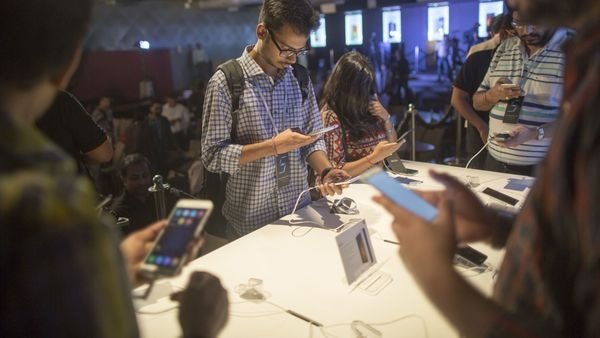
New Delhi: There’s little in common between Parle’s ₹5 biscuit pack and motor cars made by Maruti Suzuki India Ltd, except that both have been hit hard by a demand slump.
While the slowdown appears to have left few industries unscathed, it’s clear that one area where Indian consumers are loath to skimp on is smartphones.
The latest data about India’s smartphone sales bear out this assessment. Shipments grew nearly 10% in the April-June quarter, bucking the overall slowdown. What’s more, top phone makers expect to better sales in the September quarter as it leads up to the festival season when consumers typically loosen their purse strings.
“We see absolutely no slowdown at all. In fact, there is a very positive momentum building up to the festival season. The smartphone category is one which has become like an essential,” said Ranjivjit Singh, chief marketing officer and senior vice president for mobile business at Samsung India.
The changing behaviour indicates that Indian consumers are now considering smartphones a necessary expense rather than a discretionary one, given that a mobile phone has become more than just a communication tool—it’s now an entertainment device, computer and camera rolled into one.

“Smartphones will perhaps be the last sector to get impacted. You cannot live without this category. If your phone stops working, you don’t have a choice, you have to buy another one,” said Raghu Reddy, head of categories and online sales at Xiaomi India. “The first half of the year has passed and the market has grown. Based on that momentum, we believe that in the festival season, we will see the same trend.”
On Tuesday, Samsung introduced two devices in the Galaxy Note 10 series—the 6.3-inch screen Galaxy Note 10 and the 6.8-inch screen Note 10+ at a starting price of ₹69,999 and ₹79,999, respectively. “For our Note 10 series, we received twice the number of registrations compared to Note 9,” said Singh.
According to the International Data Corp.’s (IDC) Asia-Pacific Quarterly Mobile Phone Tracker, the India smartphone market saw the highest-ever second quarter (April-June) shipment of 36.9 million units, registering a 9.9% yearly increase and 14.8% growth from the preceding three months. In the January-March period, total shipments grew 7.1% from a year earlier at 32.1 million units.
Apart from smartphone users looking to upgrade, growth is being fuelled by feature phone users shifting to smartphones. In the June quarter, shipments in the feature phone market fell 26.3% from a year earlier to 32.4 million units, according to data from IDC.
“The smartphone market is a highly commoditized market. The consumer is always ready to spend on this category as a lot of our time during the day is on the smartphone,” said Tarun Pathak, associate director of Counterpoint Research.
The premium smartphone segment is growing much faster than the overall category. The overall market average selling price was $159 as of June-end, according to IDC data. However, the fastest growing segment was $200-300, where shipments doubled from a year ago. Competition in the premium segment is expected to grow with the launch of more devices in the second half of this year.
“During times of slowdown, it is possible that the average selling price (of the smartphone) may not rise as fast as expected and the consumer might spend less money than planned initially on an upgrade, but the purchase will definitely happen,” said Pathak.
Moreover, many brands that earlier sold devices solely online are looking to expand their presence to offline channels. This will further drive smartphone sales. Xiaomi aims to sell products through 10,000 retail touchpoints by the end of this year and get 50% of its business through offline sales. Premium phone maker OnePlus is also looking to increase focus on offline store expansion. The company has 12 stores of its own and wants to more than double this to 25 by the end of next year.
[“source=livemint”]
